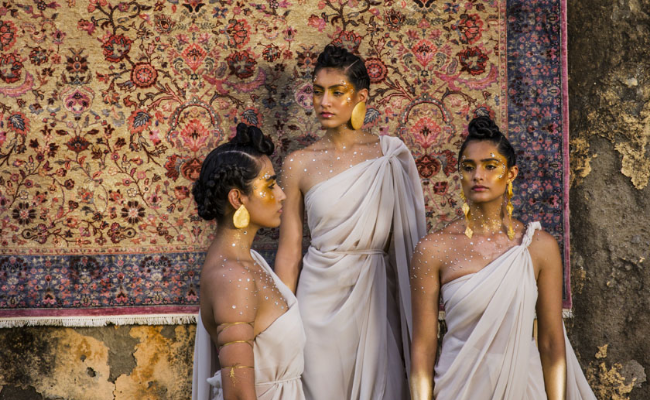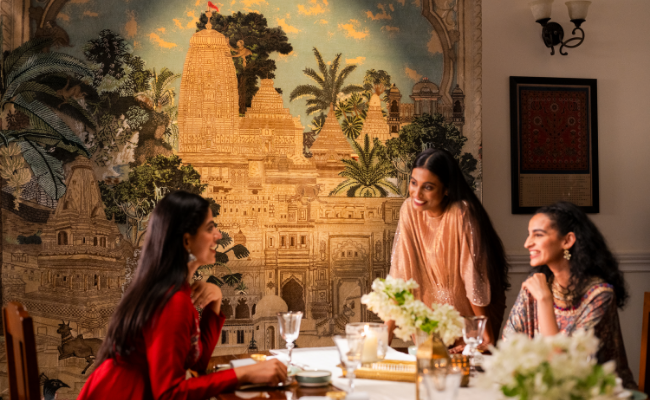
Tarun Tahiliani x Obeetee: how the design maestro designed carpets for Viraasat
In the world of fashion, Tarun Tahiliani is a name that needs no introduction. He’s the maestro who brought the concept of couture to Indian shores, blending the country’s rich heritage with contemporary design. But here’s the thing—when someone like Tahiliani ventures into the world of carpets, it’s not just about making rugs. It’s about creating art, legacy, and a story that will be passed down through generations. And that’s exactly what his second collaboration with Obeetee for Viraasat is all about.

So, what’s so special about the Viraasat collection? To put it simply, it’s where the old meets the new in the most elegant way possible. When Tahiliani sat down to design this collection, his mind wasn’t just on aesthetics. He was thinking about how each piece could capture the essence of India’s rich cultural heritage while also fitting seamlessly into the modern home. He drew inspiration from Pichwai art—a traditional style known for its intricate depictions of Indian deities and natural elements. But here’s the twist: instead of sticking to the elaborate, detailed designs that Pichwai is known for, Tahiliani aimed for something more commercial, yet no less captivating. The result? Carpets that are not just floor coverings, but statements—each one telling a story of India’s glorious past while being very much in tune with today’s design sensibilities.
What sets the Viraasat collection apart is its ability to challenge the conventional perception of carpets. Let’s face it—most people think of carpets as just another piece of decor, something you lay down on the floor and forget about. But through Viraasat, Tahiliani and Obeetee are saying, “Hold on, these aren’t just carpets; they’re heirlooms.” These are pieces that you’ll want to pass down to your children and grandchildren, not just because they’re beautiful, but because they carry with them a piece of history, a piece of who we are.
Earlier collaboration
Now, this isn’t Tahiliani’s first rodeo with Obeetee. His first collaboration, which was part of Obeetee’s Proud to Be Indian initiative, laid the groundwork for what would eventually become a long-standing partnership. Back then, Tahiliani explored three distinct themes—Lucknavi Chikankari, Indian Miniature Paintings, and Abstract Art. Each of these collections was a testament to his ability to reinterpret traditional Indian art forms in a way that felt both fresh and timeless.
The Chikankari collection, for instance, took inspiration from the delicate floral motifs of Lucknavi artisans, setting them against contemporary geometric lines to create something that was both modern and steeped in tradition. The Miniature Paintings series, on the other hand, played with the concept of borders—those intricate frames that encapsulate Indian miniatures. But Tahiliani didn’t just recreate them; he deconstructed and abstracted them, creating carpets that were as much about the absence of space as they were about the intricate designs themselves. And then there was the Abstract Art collection, where Tahiliani’s own paintings were transposed into carpets, challenging Obeetee’s craftsmen to translate the fluidity of his brushstrokes into the rigid structure of knots and yarn.
Each of these collections was a success, not just because they were visually stunning, but because they pushed the boundaries of what carpets could be. And it’s this spirit of innovation and respect for tradition that Tahiliani has carried forward into the Viraasat collection.
A Legacy in the Making
So, what’s next for Tarun Tahiliani and Obeetee? If the Viraasat collection is anything to go by, the sky’s the limit. With each collaboration, they’re not just creating carpets—they’re creating legacies. And in a world where trends come and go, that’s something truly special.
If you want to be a part of this journey, to own not just a piece of decor but a piece of history, keep an eye out for the Viraasat collection. Trust us, these aren’t just carpets—they’re stories waiting to be told.









